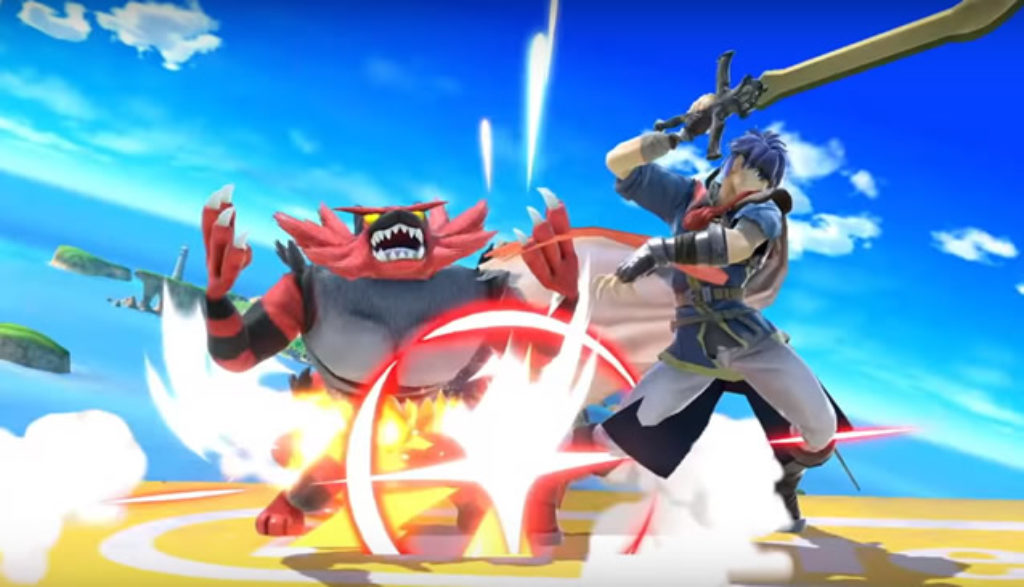
Let’s face it: Nintendo’s Super Smash Bros. franchise has always been a bit of an odd duck. Each of the four previous iterations (dating all the way back to 1999) essentially offered a fighting game, of course. But these games sport something of “kitchen sink” approach to battling that’s just a little out there. Having Mario, Pac-Man and a character from Animal Crossing going at it and slapping each other around just feels, well, let’s say weird and unexpected.
But there sure are a lot of people who really, really dig that approach. And the newest title, Super Smash Bros. Ultimate for the Switch system, sports another kitchen-sink (and maybe the bathroom sink, laundry-room sink … ) roster of 74 different Nintendo characters as of this writing (with more DLC characters immediately available). This brawler sold 3 million copies in its first 11 days … in the US alone.
Maybe there were a lot of gamers simply growing tired of Fortnite and wanting something different. But in any case, those numbers make Ultimate the biggest-selling Nintendo game ever.
So what can you expect if you pick up this rip-snorting new ultimate version of Nintendo’s fighting franchise?
Well, first of all, that roster I mentioned sports famous faces from games such as Donkey Kong, Mario, Pac-Man, Kirby, Pokémon, Sonic the Hedgehog, Zelda, Metroid, Street Fighter, Star Fox, Metal Gear Solid—pant-pant-pant—and the list stretches on and on from there. Of course you don’t get all those playable characters right off the bat. No siree! You’ve got to unlock the majority of them.
The game has two main modes of play. First there’s Smash, the head-to-head mode where you fight against friends or AI opponents. Next up: World of Light delves more deeply into a single-player story mode. But either way, the more characters you battle and beat, the more of ’em you can unlock and ultimately use.
Smash, for instance, launches you out with Mario, Pikachu, Donkey Kong, Link, Kirby, Samus, Yoshi and Fox. With that beginning crew, you can take onscreen swings at some local pals or battle against the computer. Gamers work their way through more than 100 multilevel stages, each with their own pitfalls and quirks.
And if you have enough controllers, you can play locally on your Switch with up to seven other family members or friends. (Online multiplayer battles offer a matchup of four different players through the Nintendo Switch Online Service—an add-on service that requires a subscription fee.)
The World of Light single-player story mode, on the other hand, throws things in a different direction. In it, there’s a supernatural character named the Master Hand who has flown down from the sky, zapped all of the Smash Universe heroes and sucked everyone but Kirby into a dark dimension. (Kirby knows just how to avoid those sucking things, don’t you know.) It’s up to the pink puffball to take on all the spirit-controlled doppelganger heroes one-by-one, to beat them and to set them free.
When main characters are unlocked, you can play them, but secondary characters can be attached to your hero as Spirits giving him or her in-battle boosts or special powers. Those Spirit characters also have four specific classes or types which add a rock-paper-scissors level of play to story-mode battles.
That element of the game, which can almost seem like spiritual possession, may give some parents pause; but it’s never examined or explained here in much detail. It’s really just a way to give this mode more of a board game-like feel. And at the same time, it helps you unlock a wide variety of playable characters and gives you a chance to practice their unique moves and abilities.
Now that we’ve broached the subject of “giving parents pause,” are there any other things that Mom or Dad should be aware of? Well, not much, but here are a few minor things to consider:
First of all this is a fighting game. There’s no mess or goop or foulness, but it’s all about zapping, bopping and, uh, smashing opponents in order to send them plummeting off elevated platforms. Players punch and kick one another, some using mallets, clubs, swords and cartoony firearms. And they also perform super attacks, which are essentially giant explosive strikes with lasers and rockets and the like.
Second, some in-game artwork shows female Nintendo characters in plunging necklines and clingy short skirts.
Third, though the fighting controls are fairly simple, the fighting itself can be kinda tough. It’s all about timing, character spacing and using countering moves. And then knowing when to jump from one level of the battle stage to another.
The battles are incredibly fast and fluid. And each character has his or her own special moves. So what does that mean? Younger players, used to just mashing buttons, can find themselves very frustrated once they get past the easy introductory levels. And online competition? Forgetaboutit. The majority of those players have mastered these game mechanics, making progress there very difficult.
Oh, and speaking of that, if your family does spring for the extra online fee for four-player multiplayer battles, realize that playing multiplayer with just the Switch handheld device can make play difficult. The camera swings back to show the entire platform, making the characters on screen very tiny and hard to keep track of.
All of those things considered, though, this Nintendo game is packed to the brim, bursting at the seams with action and fun characters that fans of the games love, love, love. And there’s been a lot of effort invested on the gamemaker’s part to justify that, uh, ultimate devotion.

After spending more than two decades touring, directing, writing and producing for Christian theater and radio (most recently for Adventures in Odyssey, which he still contributes to), Bob joined the Plugged In staff to help us focus more heavily on video games. He is also one of our primary movie reviewers.